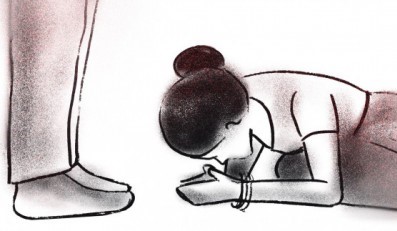Strong-willed and imaginative Anne aspires for freedom, adventures and changes in norms that undermine women, their potential, thoughts and existence. Anne empowers her friends to live their dreams, be women of their own and discover the world rather than what society grooms them to be — beautiful and well-behaved wives.
Her journey is joined by her new teacher who faces much criticism for her ability to teach. And, just because she is a woman, unnecessary questions are raised about her teaching capabilities. A red-haired Anne stands, raises voices and influences others to challenge the norms that are against women’s autonomy, participation, freedom and rights.
This story from the Canadian series named Anne with an E presents the challenges of protagonist Anne and other women seeking a progressive society. This story strongly exhibits the experience of gender-based domination and discrimination in society. Moreover, this reel story is relatable to the real life of Nepali women.
What undermines Nepali women’s power?

I am brought up in a society that appreciates women if they are tolerant, have fewer words to say, obey authority without any question and are fragile and seek help in every situation. Their value is added if they are beautiful, skilled in household chores and get married before society inquires about their age.
My grandmother and even my mother were not asked for their opinion on their marriage; they simply accepted every decision quietly. The norm of silence is passed from generation to generation and becomes a culture, which is in practice without any realisation that women too possess the right to express their opinions and take decisions for themselves.
Meanwhile, this is not limited to the four walls of our home. I have seen similar instances at my work. Even when Nepali women hold decision-making positions, they prefer to keep mum. The reason is the social expectation that sees them as quiet beings without any voices and opinions of their own.
The position of Nepali women in society

There are various studies and news reports that expose the truth behind the position of Nepali women. Meanwhile, there are numerous incidents of gender-based violence that are unreported and hidden.
It is usually perpetrated by social norms that expect women to stay silent and tolerate any form of violence against them. However, a few survivors seek help and others tolerate the violence and stay with their abusers due to social stigma and fear of family defamation.
Recently, an incident of sexual violence in a beauty pageant came to light, which occurred eight years ago. In another case, a single woman with a 21-month-old child, demands justice and punishment for the perpetrator.
However, due to the fear of humiliation, even her family did not support her. Then, the state is also not accountable for her safety and fails to provide justice.
These cases are only symbolic. Many more crimes against Nepali women are not expressed in the fear of stigmatisation and re-victimisation.
Reflection of the real world in fiction
Literature is said to be the reflection of society. Likewise, I have found a good portrayal of women’s lives in the novel The Pearl that Broke its Shell by Nadia Hashimi. Though fiction, it mirrors the hardship of Afghani women and their challenges in bringing change in their lives.
The characters from the novel made me feel as if all those are Nepali women who are going through their struggles and oppressions. Moreover, the book that centres on women’s independence, self-respect and willpower can be associated with any woman in the world.
It calls every woman to identify their strength, know about themselves and seek support to make change possible.
To date, we accepted violence as our fate, followed those restrictions and banishment on our menstruation as our religious norm and made those harmful social norms a part of our life.
Many of us, the Nepali women, lost and risked our life and health, lost our dignity and freedom, but now, we want a change in our story. For this, all we need to do is to break our shell and let the world know that we are the pearl inside it, precious and bright, and all we need is to break our silence and let the world feel the power of our voice, strong and vibrant.
Let the world feel the power

In these stories I have met and read, I am amazed to discover women’s perspective towards patriarchal society and their own way of dealing with adversity and the changes. I find the feminist standpoint theory of Dorothy Smith is applicable in explaining this phenomenon.
This theory explains that the position of women as subordinate and their experience of domination on the other way provide them with a lens to see and understand society differently.
It can be said that Nepali women construct an understanding of any circumstance from their viewpoint and experience. This knowledge and skills could be life-changing if explored and channelised properly.
The post Nepali women perceived through a Canadian film: Inspirations for a change appeared first on OnlineKhabar English News.
Comments
Post a Comment